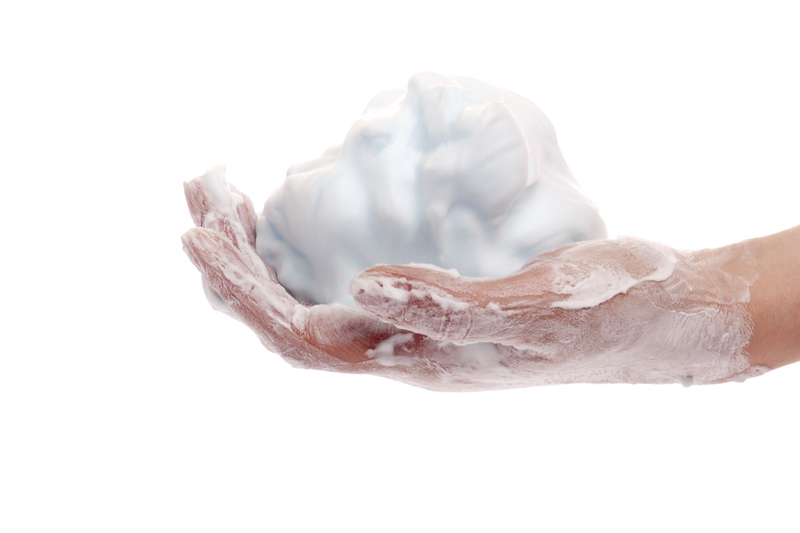Revitalize Your Home: No More Damp Smell
Posted on 03/06/2025
Revitalize Your Home: No More Damp Smell
Does your living space constantly battle a musty, unpleasant odor? The so-called damp smell in homes is not only off-putting but can also point to hidden problems that affect your comfort and health. Eliminating damp odor and revitalizing your home environment isn't just about air fresheners--it's about addressing root causes and preventing future issues.

Understanding the Source of the Damp Smell
Before you can banish damp smells, it's crucial to recognize where they originate. Musty odors typically result from excess moisture lingering indoors, enabling mold and mildew growth. Common culprits include:
- Basements with poor ventilation
- Bathrooms lacking proper airflow
- Leaky pipes or roofs
- Flood-prone or poorly insulated areas
- Wet clothing or towels left unattended
- Carpets and furniture absorbing moisture
When these issues combine, you're left with that all-too-familiar musty home smell that's tough to mask. But don't worry--revitalizing your living space is possible with effective, strategic action.
Why Eliminating Damp Smell Is Crucial
It's easy to ignore a faint musty scent at first, but neglecting to remove damp odors can lead to bigger problems:
- Health hazards: Mold and mildew exposure can trigger respiratory issues, allergies, and irritation.
- Property damage: Persistent damp conditions weaken structures and ruin furnishings, carpets, and paint.
- Reduced home value: A fresh-smelling environment is essential for both daily enjoyment and potential resale.
- Negative first impressions: Guests and family members will notice musty odors right away.
Comprehensive Steps to Remove Damp Smell
Say goodbye to musty odors with a multi-pronged approach. Here are thorough strategies to revitalize your home and eliminate damp smell once and for all:
1. Identify and Fix Moisture Sources
Check all areas for signs of water intrusion or standing moisture. Common places to inspect include:
- Under sinks and behind appliances
- Near windows and exterior walls
- Attics and crawlspaces
- Basements and cellars
Fix leaks, seal cracks, and ensure waterproofing wherever needed.
2. Improve Air Circulation and Ventilation
A stagnant indoor atmosphere allows moisture to build up. To keep your home air fresh:
- Open windows daily for cross-ventilation.
- Install or upgrade exhaust fans in bathrooms and kitchens.
- Use fans and dehumidifiers, especially in damp areas.
- Consider air purifiers with activated carbon filters to neutralize musty smells.
Consistent air flow helps prevent recurrence of the typical musty smell in homes.
3. Wash Soft Furnishings and Fabrics
Fabrics, carpets, and upholstery soak up moisture and act as reservoirs for that lingering home damp smell. Refresh and clean them by:
- Washing curtains, bed linens, and cushion covers frequently.
- Steam cleaning carpets and upholstery.
- Dry-cleaning items that can't be machine washed.
- Vacuuming often to remove dust and spores.
Always dry items thoroughly before returning them to the affected room.
4. Deep Clean Hard Surfaces
Mold and mildew thrive on any damp surface. To combat this:
- Wipe down all surfaces--walls, tiles, floors, cabinets--using a mixture of vinegar and water or a mild commercial mold remover.
- Scrub bathroom and kitchen grout with baking soda paste; rinse with clean water.
- Don't forget behind large appliances and in corners that seldom see light.
5. Use Natural & Commercial Deodorizers
While you tackle the source of the damp house smell, use deodorizers to neutralize any residual odors:
- Baking soda: Place open boxes or bowls around rooms and inside closets.
- Activated charcoal: Highly effective at absorbing moisture and odors.
- White vinegar: Set out bowls of vinegar; the vinegar smell disappears, taking musty odors with it.
- Commercial odor absorbers like silica gel or moisture-eating crystals.
*Do not rely solely on deodorizers to get rid of damp smell; always address the underlying problem.*
6. Maintain Optimum Indoor Humidity
A healthy home environment has indoor humidity between 30-50%. High humidity fuels musty scents and mold growth. Tips for managing moisture:
- Run dehumidifiers in damp areas, emptying water trays regularly.
- Use silica gel or moisture absorbers in wardrobes and storage spaces.
- Keep indoor plants in check, as overwatering can add excess moisture.
Monitor humidity with a digital hygrometer for optimal results.
7. Inspect and Clean HVAC Systems
Your heating, ventilation, and air conditioning (HVAC) system can spread humid, musty-smelling air throughout your home. For a permanently fresh living space:
- Change HVAC and furnace filters every 1-3 months.
- Schedule duct cleaning every 3-5 years, or sooner if you notice dust buildup.
- Ensure vents are clear and dry; moldy vents must be promptly addressed.
8. Don't Forget the Little Things
Sometimes, it's the smallest habits that allow a damp smell in your home to linger:
- Never leave wet laundry or towels inside living areas.
- Dry shoes and umbrellas near the door before storing them indoors.
- Regularly empty trash bins and clean pet bedding.
- Periodically check cupboards for moisture and dry foods that could harbor mold.
Preventing Damp and Musty Odors in the Future
After successfully removing damp smell and revitalizing your home, prevention is key. Adopt these lifestyle and maintenance habits for a continuously fresh, healthy house:
Routine Maintenance Checklist
- Regularly inspect roofs, gutters, and exterior walls for leaks or water ingress.
- Ensure proper drainage around your home's foundation.
- Seal windows and doors to keep moisture out.
- Address condensation quickly, especially on windows and pipes.
- Keep gutters clear to prevent overflow into basements or crawlspaces.
Smart Habits for a Fresh-Smelling Home
- Launder bedding and soft furnishings monthly.
- Wipe down bathroom and kitchen surfaces daily.
- Allow plenty of sunlight into rooms--UV light naturally kills mold spores.
- Store seasonal clothing and linens in airtight containers with moisture absorbers.
Natural Remedies for a Sweet-Smelling Home
If you're looking for eco-friendly techniques to dispel house odors and enhance your indoor air quality, try these natural solutions:
- Essential oils: Add a few drops of tea tree, lavender, or eucalyptus oil to a diffuser for anti-mold benefits.
- Citrus peels: Place orange or lemon rinds in a bowl to freshen the air.
- Herbal sachets: Fill cloth bags with dried lavender, rosemary, or mint for closets and drawers.
These remedies don't just mask scents--they contribute to an overall pleasant and clean home environment.

When to Seek Professional Help
Despite your best efforts, sometimes the damp smell in your house could indicate serious problems like hidden mold infestations or major leaks. Call a professional if you notice:
- Persistent, unexplained musty odors after deep cleaning
- Visible mold patches or black streaks on walls and ceilings
- Repeated flooding or leaks you can't locate or fix
- Mold allergies or asthma symptoms worsening at home
A certified mold remediation expert will identify the source and carry out a safe, thorough removal.
Conclusion: Breathe Easy in a Fresh, Revitalized Home
A fresh, odor-free living environment is about more than just comfort--it's part of a healthy lifestyle. By addressing moisture at its source, keeping up with cleaning, and making proactive changes, you'll revitalize your home and eliminate damp smell for good. With these comprehensive tips, welcome friends, family, and fresh air--no more musty mansion!
Is your home ready for a transformation? Take these steps, embrace new routines, and enjoy the clean, vibrant home environment you deserve.




